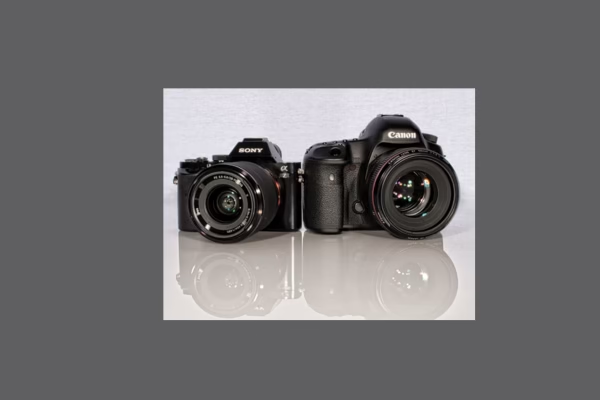The 35mm camera is one of the most significant innovations in the history of photography. It revolutionized the way people captured images, making photography more accessible, portable, and versatile. From its early beginnings in the late 19th century to its dominance throughout the 20th century and its continued legacy in the digital age, the 35mm camera has played a crucial role in shaping the art and science of photography
Origins of 35mm Film.
The roots of the 35mm camera can be traced back to the development of 35mm film. In the 1880s, the American entrepreneur George Eastman introduced roll film, which replaced cumbersome glass plates in cameras. However, it was Thomas Edison and his assistant William Kennedy Laurie Dickson who first used 35mm film for motion pictures in the 1890s. They standardized a 35mm film format with sprocket holes to transport film through cameras and projectors. While this format was initially intended for cinema, it would later be adapted for still photography.
The transition of 35mm film from motion pictures to still photography began in the early 20th century. The first known 35mm still camera, the Tourist Multiple, was patented in 1913 by the American designer William H. Peck. However, it was a limited success. The breakthrough came with the introduction of the Leica camera.
The Birth of the 35mm Still Camera
In 1913, Oskar Barnack, a German engineer at Leitz (later Leica), developed a compact prototype camera that used 35mm motion picture film. Originally designed to test film stock for movies, his “Ur-Leica” (short for “original Leica”) allowed photographers to take multiple images with a lightweight, portable camera. However, the outbreak of World War I delayed its launch. It wasn’t until 1925 that Leica introduced the Leica I, the first commercially su ccessful 35mm still camera. Its widespread adoption revolutionized photography, making image capturing more convenient and accessible to photographers worldwide.
ccessful 35mm still camera. Its widespread adoption revolutionized photography, making image capturing more convenient and accessible to photographers worldwide.
The Leica- I, introduced key features that became standard in 35mm cameras, including a high-quality lens, interchangeable film rolls, and a small, lightweight body. It allowed photographers to capture spontaneous moments with greater ease, making it particularly useful for documentary and street photography. The success of Leica inspired other manufacturers to develop similar cameras.
small, lightweight body. It allowed photographers to capture spontaneous moments with greater ease, making it particularly useful for documentary and street photography. The success of Leica inspired other manufacturers to develop similar cameras.
The Rise of 35mm Photography
Throughout the 1930s, the popularity of 35mm cameras grew, with German companies like Zeiss Ikon and Japanese manufacturers like Canon entering the market. In 1934, Kodak introduced the 35mm “135” film cartridge, which made film loading simpler and more user-friendly. This development further contributed to the widespread adoption of 35mm photography.
During World War II, the portability and reliability of 35mm cameras made them indispensable tools for photojournalists and war correspondents. Iconic images from the war, captured by photographers such as Robert Capa, demonstrated the power of 35mm cameras to document history in real time.
In the post-war years, Japanese manufacturers played a crucial role in advancing 35mm camera technology. Companies like Nikon, Canon, and Minolta introduced high-quality rangefinder and single-lens reflex (SLR) cameras that became popular worldwide. Nikon, in particular, gained international recognition after American photojournalists used its cameras during the Korean War in the 1950s.
The Golden Age of 35mm SLR Cameras
The 1960s and 1970s marked the golden age of 35mm photography, particularly with the rise of the SLR camera. Unlike rangefinder cameras, which used separate viewfinders, SLRs allowed photographers to see exactly what they were capturing through a mirror and prism system. This innovation made composition more precise and was particularly useful for professional and artistic photography.
Models like the Nikon F (1959), Canon F-1 (1971), and Olympus OM-1 (1972) became industry standards. D
uring this time, automatic exposure, motorized film advance, and 

improved lens technologies made photography more efficient and versatile.
By the 1980s, electronic advancements brought autofocus cameras to the market. Minolta introduced the first successful autofocus SLR, the Maxxum 7000, in 1985, paving the way for further automation in photography.
The Transition to Digital Photography
The 1990s saw the emergence of digital photography, which gradually replaced film-based cameras. Despite this shift, 35mm film cameras remained popular for several years, particularly among professional and fine art photographers who valued the unique aesthetic qualities of film. However, as digital technology improved, manufacturers phased out film cameras. In 2004, Kodak, once a dominant force in film photography, announced it would discontinue most of its film camera production.
Despite the decline of film-based 35mm cameras, the format continued to influence digital camera design. Many modern dig
ital cameras, including DSLRs and mirrorless models, use sensors that mimic the dimensions of traditional 35mm film, known as “full-frame” sensors. This ensures compatibility with legacy lenses and maintains the depth-of-field characteristics that photographers were accustomed to with 35mm film.
The Enduring Legacy of 35mm Cameras
Although digital photography dominates today, 35mm film cameras have experienced a resurgence in interest, particularly among photography enthusiasts, artists, and collectors. Many photographers appreciate the tactile experience, colour rendition, and grain structure of film that digital cameras struggle to replicate. Companies like Leica and Nikon still produce film cameras, catering to this niche market.


